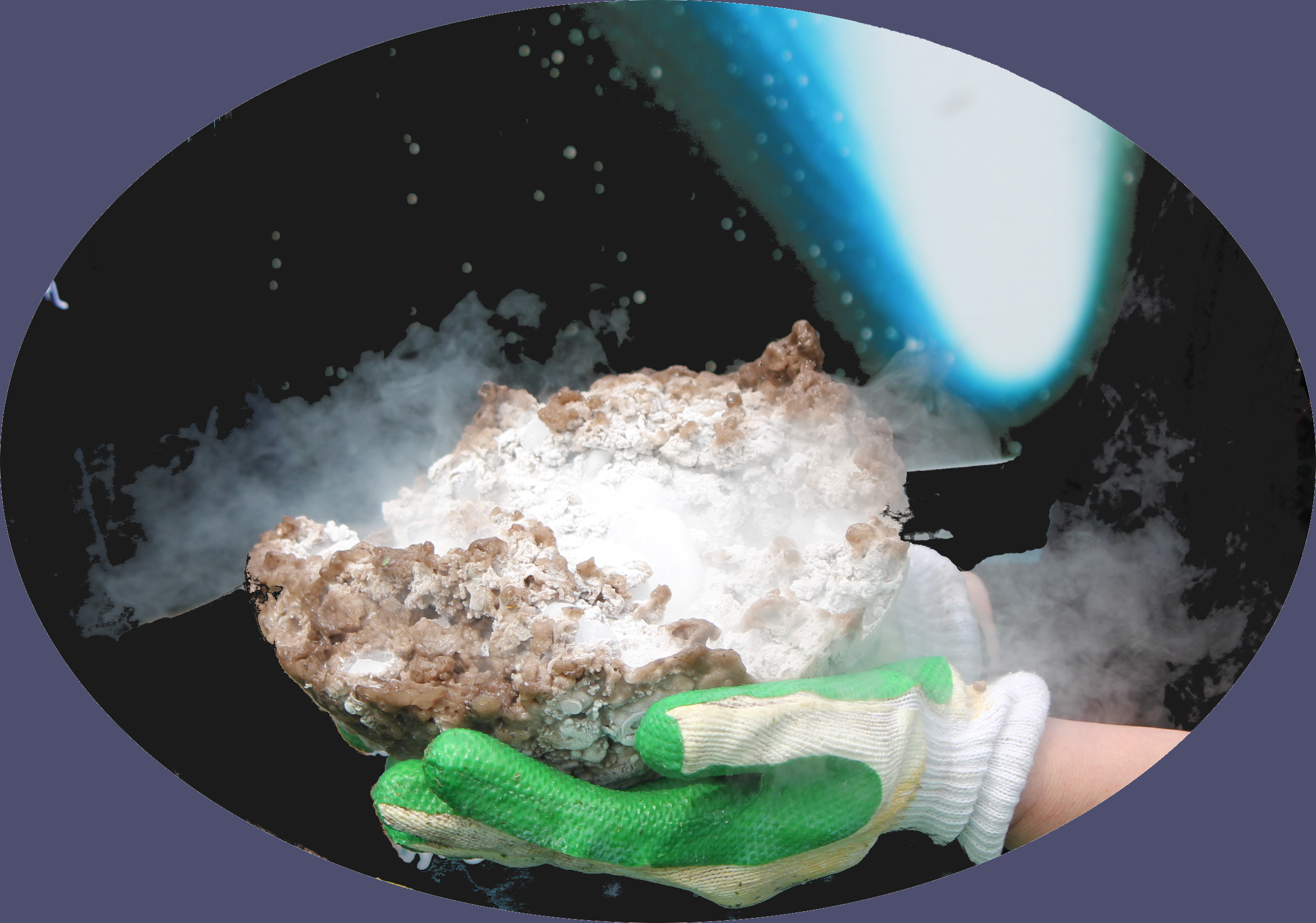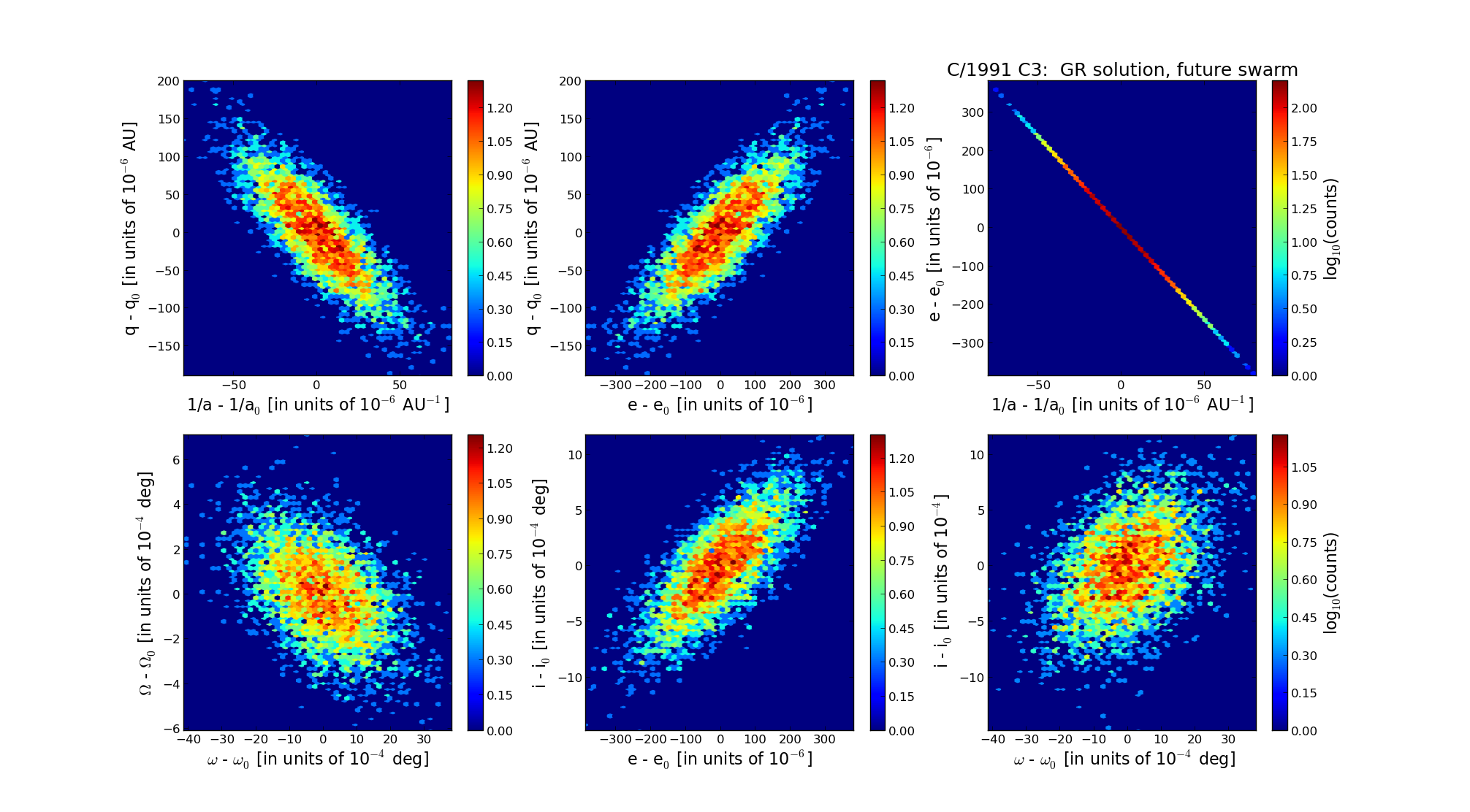| Solar System Dynamics & Planetology Group |
 |
C/1991 C3 McNaught-Russell |  |
| Solar System Dynamics & Planetology Group |
 |
C/1991 C3 McNaught-Russell |  |
| number of observations | 42 |
| number of residuals | 82 |
| data interval | 1991 Jan. 26 — 1992 Apr. 30 |
| rms [arcsec] | 0.96 |
| orbit quality class | 1b |
| Epoch (TT) | 19901105.0 | = JD 2448200.5 |
| time of perihelion passage (TT) | 19901018.197249 | ± 0.009248 |
| perihelion distance | 4.77707372 | ± 0.00005293 |
| eccentricity | 1.00174603 | ± 0.00010724 |
| argument of perihelion [deg] | 320.886310 | ± 0.001085 |
| longitude of the ascending node [deg] | 161.709637 | ± 0.000174 |
| inclination [deg] | 113.430375 | ± 0.000389 |
| inverse semimajor axis [10-6 au-1] | -365.50 | ± 22.44 |

| Epoch (TT) | 16831224 | |
| time of perihelion passage (TT) | 19901018.626787 | ± 0.009266 |
| perihelion distance | 4.77416391 | ± 0.00005344 |
| eccentricity | 0.99917740 | ± 0.00010632 |
| argument of perihelion [deg] | 320.983556 | ± 0.001101 |
| longitude of the ascending node [deg] | 161.703733 | ± 0.000174 |
| inclination [deg] | 113.445718 | ± 0.000381 |
| inverse semimajor axis [10-6 au-1] | 172.30 | ± 22.27 |

| Epoch (TT) | 23131202 | |
| time of perihelion passage (TT) | 19901016.798871 | ± 0.009585 |
| perihelion distance | 4.77139459 | ± 0.00005493 |
| eccentricity | 0.99323264 | ± 0.00010642 |
| argument of perihelion [deg] | 320.741939 | ± 0.001141 |
| longitude of the ascending node [deg] | 161.716960 | ± 0.000177 |
| inclination [deg] | 113.668530 | ± 0.000370 |
| inverse semimajor axis [10-6 au-1] | 1418.32 | ± 22.32 |